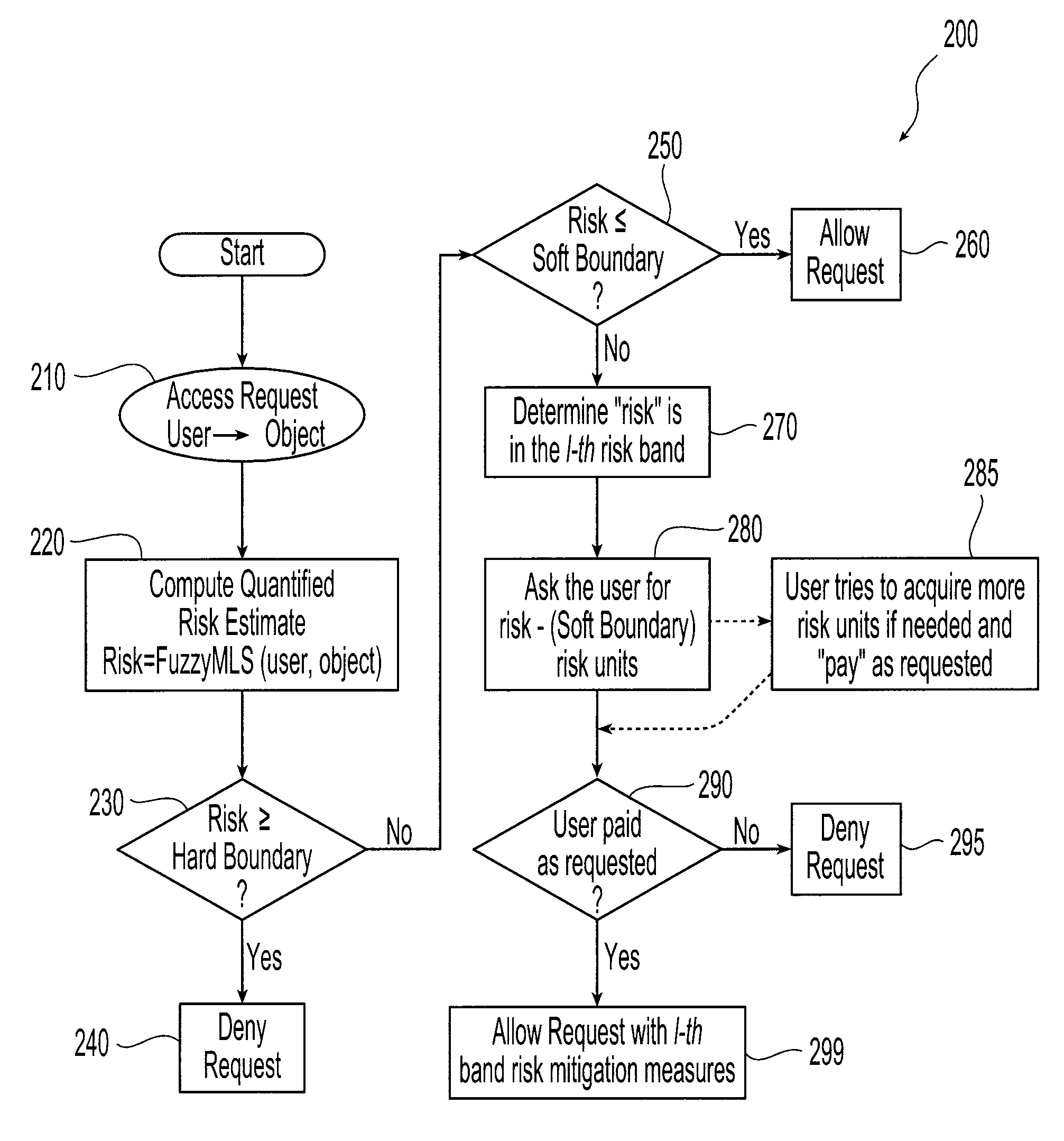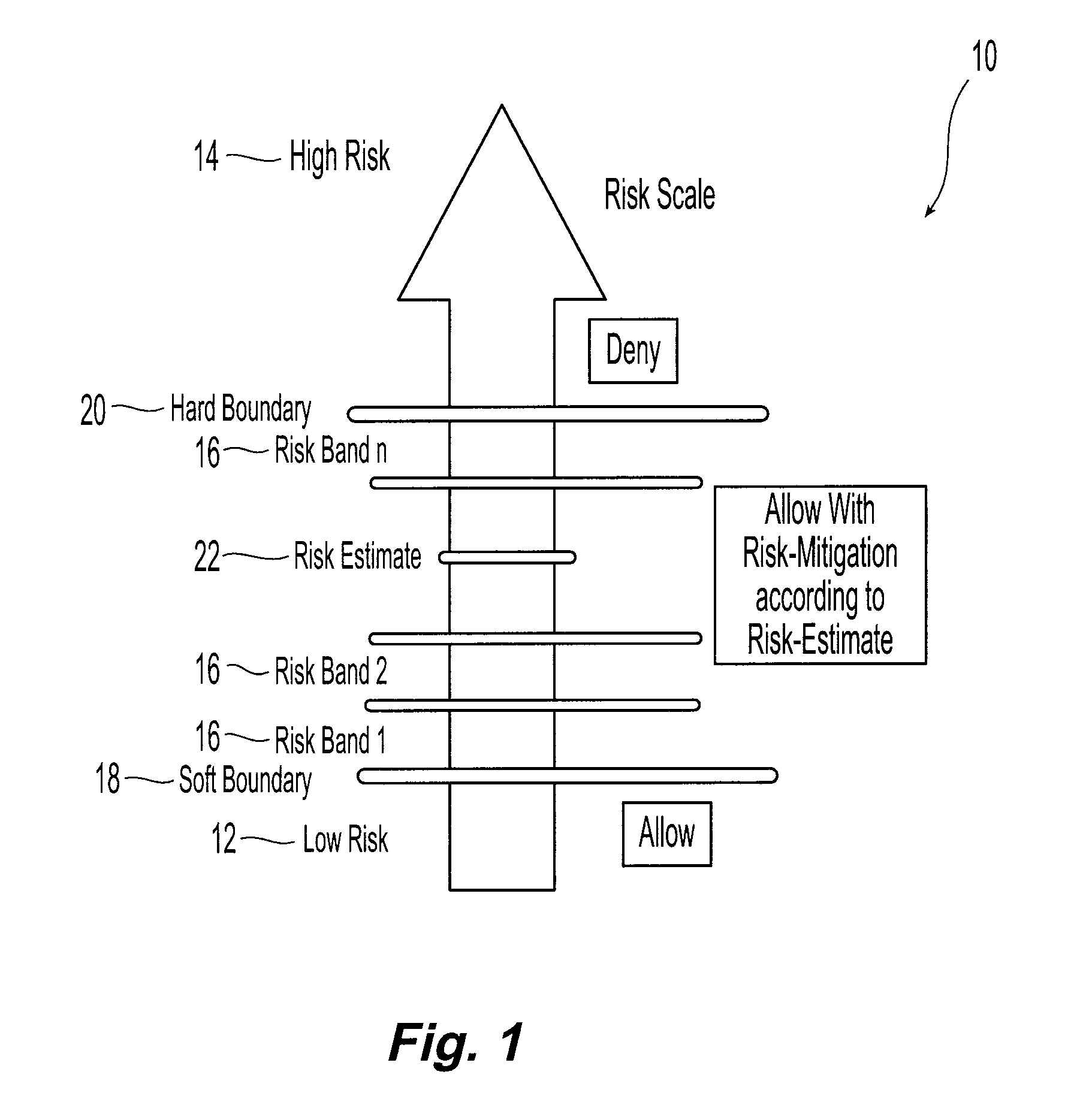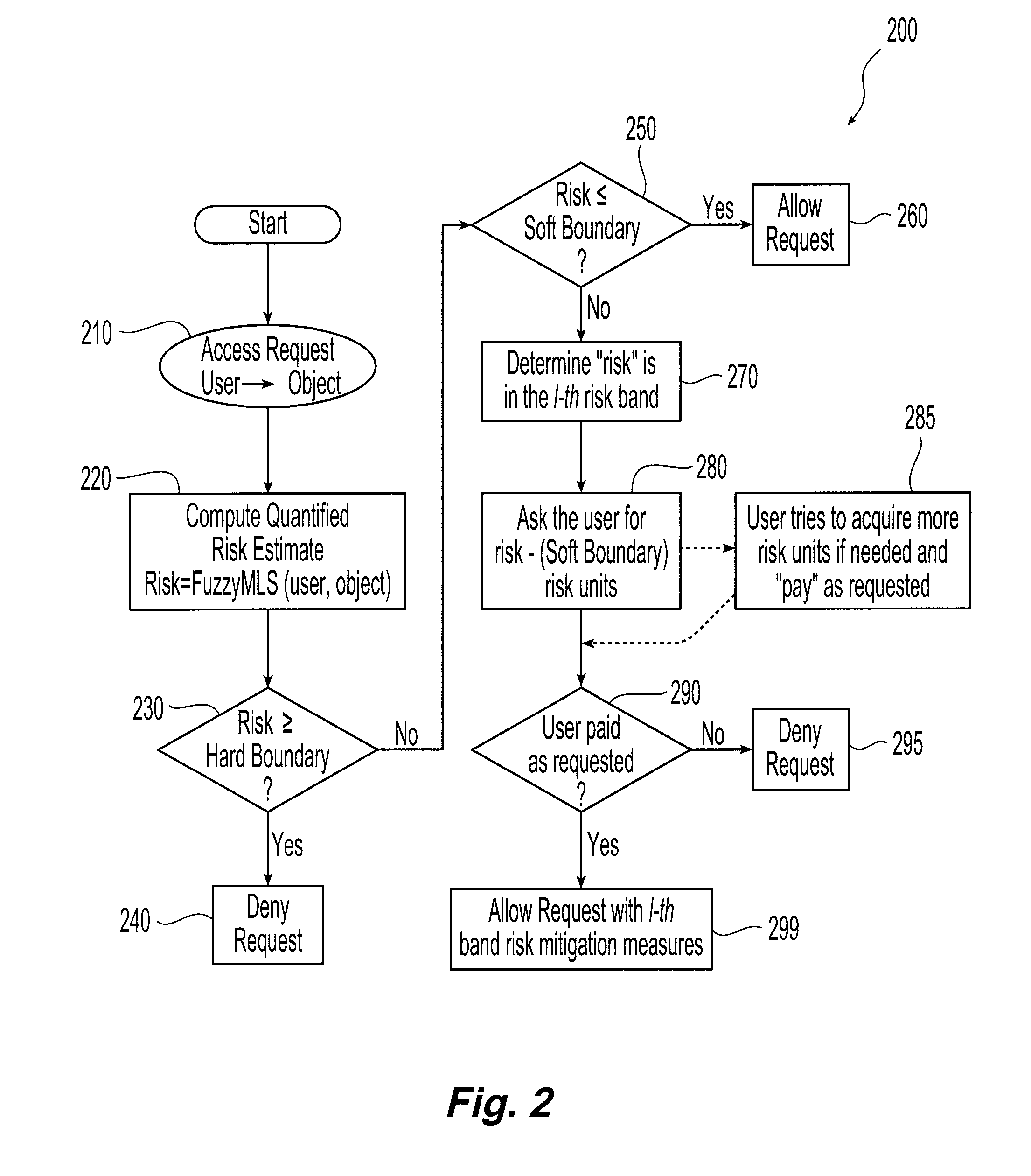Risk adaptive information flow based access control
a technology of information flow and access control, applied in the field of access control within the computing system, can solve the problems of insufficient flexibility to deal with the dynamic environment and needs of these organizations, degrade the effectiveness of response, and existing security policy models are too rigid, so as to achieve maximum benefit to the organization and cap the expected damage an organization could suffer
- Summary
- Abstract
- Description
- Claims
- Application Information
AI Technical Summary
Benefits of technology
Problems solved by technology
Method used
Image
Examples
Embodiment Construction
[0017]Systems and methods in accordance with the present invention allocate a risk quota among a plurality of individual users consistent with the overall risk tolerance and goals of a given organization or computing system. In general, for a given exchange or access of information by a given user, the risk associated with that exchange is estimated based on the information accessed and the security attribute of the user. The security attribute includes the user's identity and other information such as the user's tag as described in David E. Bell and Leonard J. LaPadula, Computer Security Model: Unified Exposition and Multics Interpretation, Technical Report ESD-TR-75-306, The MITRE Corporation, Bedford, Mass., HQ Electronic Systems Division, Hanscom AFB, Mass., June (1975). Each user is allocated a prescribed risk quota consistent with the overall risk tolerance and goals of the organization.
[0018]Having estimated the risk, access to that information is allowed or denied based upon...
PUM
 Login to View More
Login to View More Abstract
Description
Claims
Application Information
 Login to View More
Login to View More - R&D
- Intellectual Property
- Life Sciences
- Materials
- Tech Scout
- Unparalleled Data Quality
- Higher Quality Content
- 60% Fewer Hallucinations
Browse by: Latest US Patents, China's latest patents, Technical Efficacy Thesaurus, Application Domain, Technology Topic, Popular Technical Reports.
© 2025 PatSnap. All rights reserved.Legal|Privacy policy|Modern Slavery Act Transparency Statement|Sitemap|About US| Contact US: help@patsnap.com



